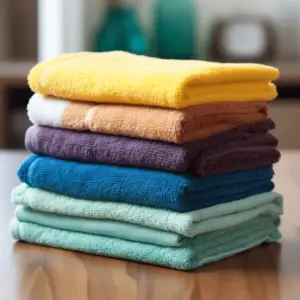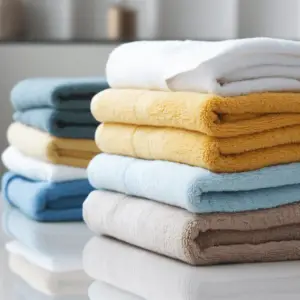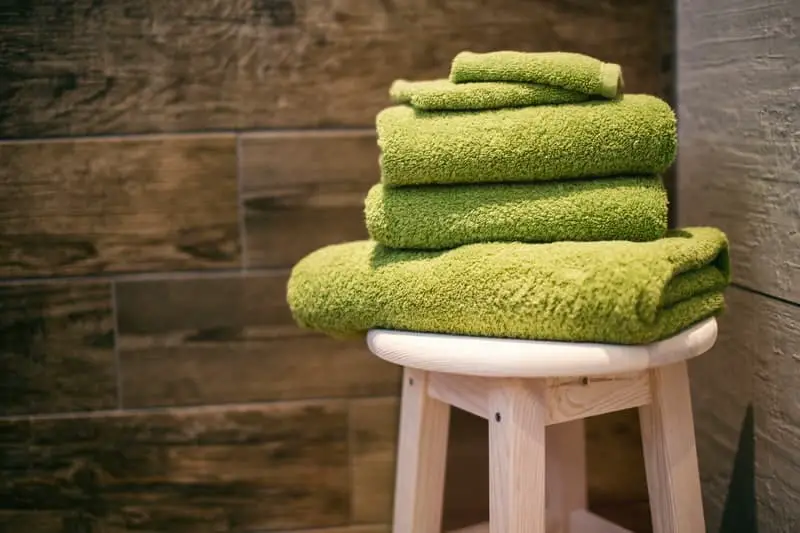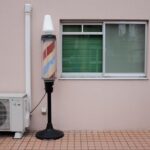Table of Contents
What is mildew?
Mildew stains towels refers at least generically to certain types of mold and microscopic fungus that grow on organic matter such as kitchen refuse, clothing, wall surfaces, sinks, and other surfaces that have an abundance of stationary moisture or areas where moisture almost never dries out.
Mold is part of the natural world and its spores are constantly being dissipated and blown about into the air settling on every possible surface you can think of including on us.
In tight spaces, these molds cause a musty stuffy unpleasant smell as they grow.
Without interference, mold will continue to grow completely devouring walls, clothes, and food items alike.
In some cases, severe mold growth can be toxic to humans if a large number of spores are inhaled or ingested. Mold and mildew must therefore always be dealt with and kept at bay.
How mildew stains form on your towels

When mildew forms on clothes, it is a ghastly sight and the smell is no better. Towels, in particular, are cloth items that constantly come into contact with water and other wet substances such as food and bodily fluids.
They are constantly being used for wiping down surfaces, hands, faces etcetera.
Once you are done with towels you put them into the laundry for cleaning and once they are spic and span, you repeat this cycle.
It is this melee that you are likely to neglect just how much you have let your towels dry out or how well you have disinfected and treated the towels to eradicate and kill mold spores.
Arguably, mildew is one of the toughest stains to eradicate from clothes but with some effort and a ton of patience, it can be done.
Below are some cleaning solutions that will help on how to get mildew stains out of towels:
Bleach
A concentrated bleach plus water mixture, which will often do the trick. Mix one part bleach with three parts water.
Towels come in different thicknesses and their fabric strength can vary so be sure to check the tag which will guide you on how concentrated your mixture should be.
After brushing off any mildew that can be lightly scrubbed away, use a small brush or even a toothbrush to rub your solution on the mildew stain and scrub away as much of it as possible.
Soak the towels in the bleach solution and wash. This process is quite effective on mildew stains but if not, you may need to repeat this a number of times eventually clearing out mildew from your towels.
Both mildew and bleach weaken fabric so this is sure to cause your towels to lose some luster.
Bleaching like this cannot be used on colored fabrics however strong so this is a solution for white towels only. T
here are, however, bleaching agents that are formulated for colored fabrics.
Borax
Borax, also known as sodium borate is a white powder that is available in stores and is largely used in the household as a cleaning agent.
Mildew stains towels is a fairly harsh alkaline substance so it is important to use gloves and mix your cleaning solution to the specifications provided.
Borax is an effective mold killer and can also be used to a degree with colored towels.
Once you have mixed borax with water according to the instructions given, use a toothbrush to scrub away the mildew on the affected parts. It would be advisable to wear gloves when using borax.
Scrub off as much of it as you can before loading your towels into the wash and washing normally in borax and warm water.
Baking Soda
Baking soda or sodium bicarbonate is an alkaline powder similar to borax but significantly less potent.
It is used as a cooking agent and can also be used in some cases for cleaning difficult stains. It is also an effective cleaning agent for mildew stains.
Baking soda is safe for humans and would not burn the hands. In twenty liters of hot water, mix two cups of baking soda and mix.
Soak your towels in the mixture for two hours then wash your towels normally. Repeat this process if the stains do not clear completely.
Baking soda should clear mildew stains effectively over time.
White Vinegar
White distilled vinegar is one of the most versatile compounds and it is no wonder that it is also used as an effective cleaning agent for mildew stains.
In approximately twenty liters of hot water, pour two cups of vinegar and soak your white or colored towels for about an hour.
Wash normally and rinse out the vinegar thoroughly. Steep your towels in normal washing powder and water for another hour and wash normally.
Rinse thoroughly and dry the towels. Your towels should be mildew-free.
Some important tips:
Mildew stains towels is particularly severe, patience is key and repeated washes are what will eventually clear the mildew from your towels.
Your local dry cleaner could also be a helpful resource.
The sun is your friend

We have grown so reliant on technology that in cases such as these we neglect the simplest of solutions.
Make it a habit to sundry towels if the sun is up. Sun’s rays are an effective mold killer and sundried clothes aerate better than machine dried garments.
Towels are notorious for retaining undetectable moisture pockets even when machine dried. Sun-drying them is a very effective way to keep towels completely dry and free of the moisture that mold needs to develop.
Clean your washing machine
If your mildew keeps recurring, it may be that your towels are retaining mold spores from your machine.
It is easy to forget to clean your washing machine for long periods of time allowing mold spores to hide in the crevices.
Machines often have a tub cleaning function so when using it, set the machine to the hottest water temperature and add a cup of white distilled vinegar. You can repeat this wash one more time.
Let your machine wash using this solution and you will notice how fresh and mildew-free your towels will be going forward. Good luck!


